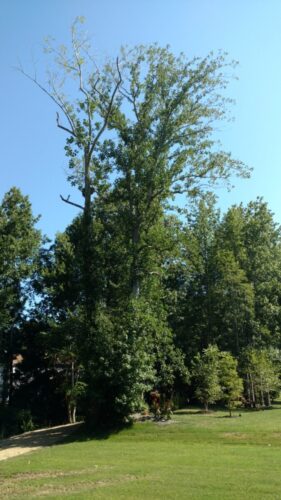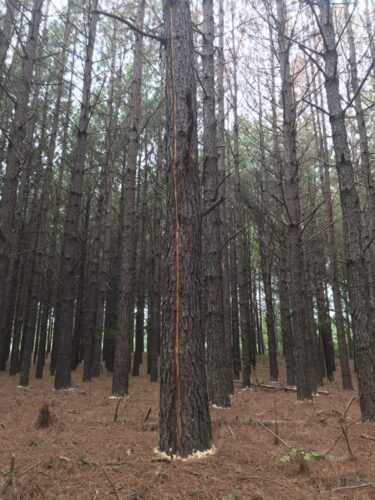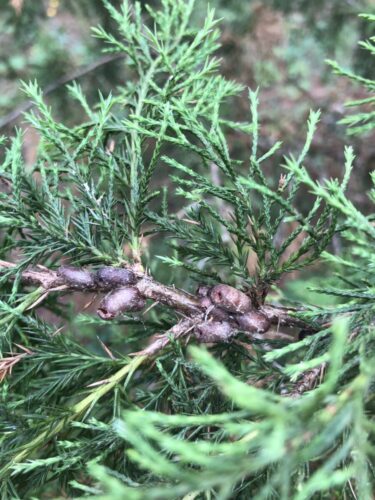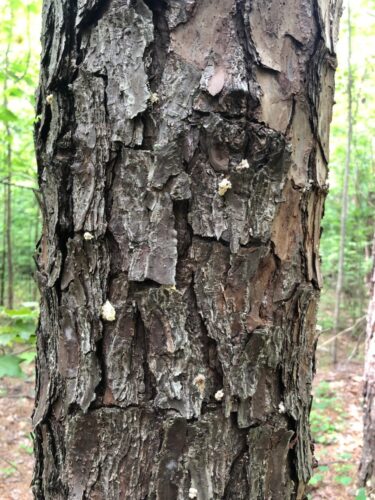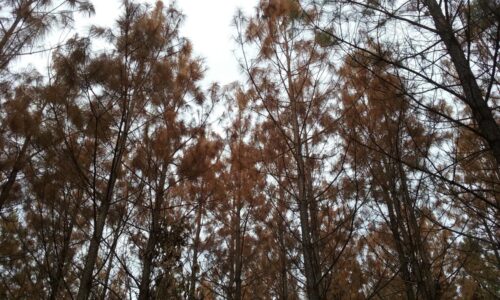Forest Health – Scout It Out!
July 30, 2021 3:29 pm
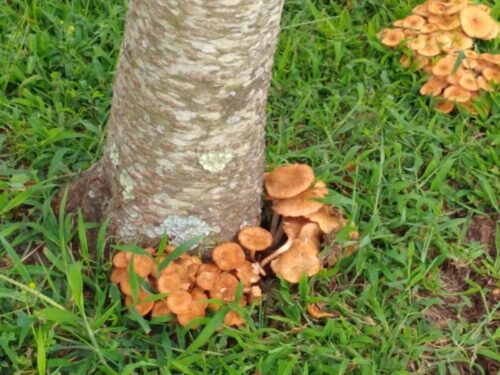
By Lori Chamberlin, Forest Health Manager
Dead and declining trees are a natural component of healthy forests. But determining what initiated tree decline can be useful — especially when making management and control considerations, such as removal or treatment. Scouting your woods regularly can help you discover forest health issues before they become big problems.
Proper diagnosis of tree problems is a key factor in forest management. If you notice tree decline, the first step is to determine the causal agent. Biotic (living) and abiotic (non-living) factors should be considered, and many tree issues result from a combination of factors. Some of these problems are obvious, but many are difficult to discern. When the cause of decline is not obvious, there are usually clues that help with diagnosis.
First, identify the tree. This will help narrow down the list of possible damage agents. Some tree pests are host specific, so proper identification can sometimes rule out certain issues. DOF’s Common Native Trees of Virginia is a good, quick reference.
Next, check the surroundings. Is there construction nearby? Is there adjacent land where herbicides may have been applied recently? Check the terrain for soil drainage, and look for signs of storm damage such as broken limbs or lightning strikes. It is also important to look at other plants. Problems caused by physical, chemical, or environmental factors usually affect most or all plant species in the area, whereas problems caused by organisms seldom affect more than one or a few species.
- Tree in decline after construction
- Lightning-struck tree attacked by insects, as evidenced by sawdust at the base
Now identify the symptoms, which may include leaf wilting, leaf discoloration, defoliation, branch dieback, cankers, or sprouting. Symptoms are the tree’s response to the damage agent, whereas signs are evidence of a pest or disease. Egg masses or casings, shed exoskeletons (outer shells of molting insects), frass (insect excrement), and exit/entrance holes are common signs of insects. Signs of a disease include fruiting bodies (e.g. mushrooms), lesions, resin, or sap flow.
- Egg casings left behind on branches
- Pitch (resin) tubes indicating bark beetle attack
- Foliage discolored after insect attack
- Mushrooms can indicate root decay
All of these observations will help diagnose the tree problem. Often, if you can put together the tree species with signs and symptoms of biotic and abiotic factors, you can narrow the list and work to identify the causal agent. DOF’s Tree and Forest Health Guide is a good place to start; this publication lists all the common tree disorders in Virginia. General guidelines are given for the diagnosis and treatment of biotic and abiotic disturbances of forests and individual trees.
Next time you’re out for a walk in the woods, practice looking for tree symptoms and signs of what may have caused them. If you’re stumped by declining trees on your property, your local DOF forester may be able to help.
Tags: Forest Health Impacts
Category: Administration, Forest Health

